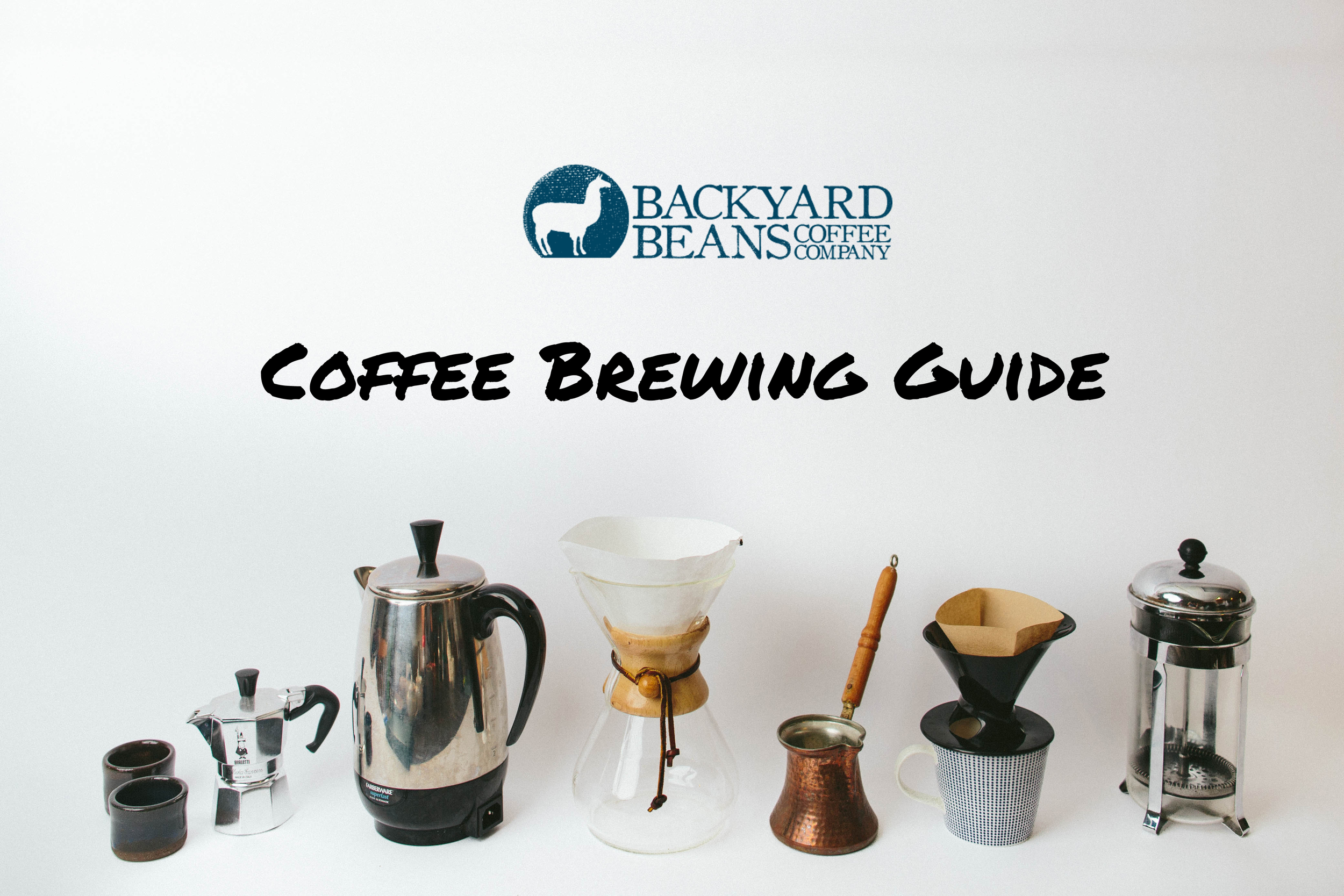Backyard Beans Coffee: A Guide to Coffee Brewing Methods
BACKYARD BEANS, COFFEE BREWING GUIDE.
Here at Backyard Beans Coffee Co. it’s our joy roasting carefully selected beans to perfection. One of our roasters, Bobby, put together some brewing tips for this month’s blog post so that you can enjoy our coffee to it’s fullest potential. Let us know how you liked your coffee after you’ve considered his tips!
Backyard Beans Brewing Tips
1. Filtered is better. If you won’t drink the water straight then don’t brew with it, filtered water is best. Also, make sure to avoid using distilled or reverse osmosis water. Why? You actually want some minerals in the water so the coffee doesn’t taste flat.
2. Burrs over Blades. When using a blade grinder, the blades mince the beans rather than properly grinding them, so you end up with a lot of coffee dust, what's often called "Fines". Brewing with fines will over-extract and leave your coffee tasting bitter. Freshly grind your beans with a burr grinder for optimal aroma, taste, and extraction.
3. Brew Hot! The ideal water temperature for brewing coffee is between 195-205°F. If you are boiling water for a manual brew method, let the kettle sit for 1-2 minutes after it boils and the water will come down to the optimal brewing temperature.
4. Measure! The single most important part of brewing perfect coffee is the ratio of water to ground coffee. I'll talk more about this below, but for the best possible cup, weigh both your water and coffee on a small kitchen scale to ensure the proper brewing ratio. Don’t have a scale? Check out the coffee scoop table at the bottom of this post.
5. Clean the Machine. If your using an automatic dripper, make sure it's clean. Machines that aren't clean will leach flavors into your brew, so try to clean your machine at least once a month to ensure the quality of your coffee. It's also a good idea to flush the brewing device and filter with hot water before brewing, this helps to pre-heat the brewing device as well as wash out any papery taste from the filter.
One of the most important concepts to understand when brewing coffee is the ratio of dry coffee grounds to brewing water. Having the right ratio will help to ensure that the coffee is extracted to its sweet spot. The ratio will vary slightly depending on the brewing method, however, a good place to start is a 1/16 ratio: 1 part coffee grounds to 16 parts water. The most precise and simple way to achieve this ratio every time is by using a digital kitchen scale, weighing the coffee and the water. So, for example, a good ratio for a single serving (about 8 ounces) would be 20g/320g –20 grams of coffee grounds to 320 grams of water. A good ratio for a larger batch of about 40 fl ounces of brewed coffee would be 85g/1400g.
Ratio’s can get tricky if you don’t have a scale and use a coffee scoop to measure, but here are some rough guidelines to go by. A coffee scoop isn’t standardized but generally a level scoop holds about 10 grams. Usually a “cup” on a coffeemaker is equal to 5 fl ounces. In order to hold true to the 1/16 ratio you will want to use a little less than 1 scoop for every “cup”.
4 cup / 3.5 scoops
6 cup / 5 .3 scoops
8 cup / 7 scoops
10 cup / 9 scoops
12 cup / 10.5 scoops
In the coming month’s we will highlight some of our favorite brewing methods with more specific and in-depth guides for each method. But first, coffee.

